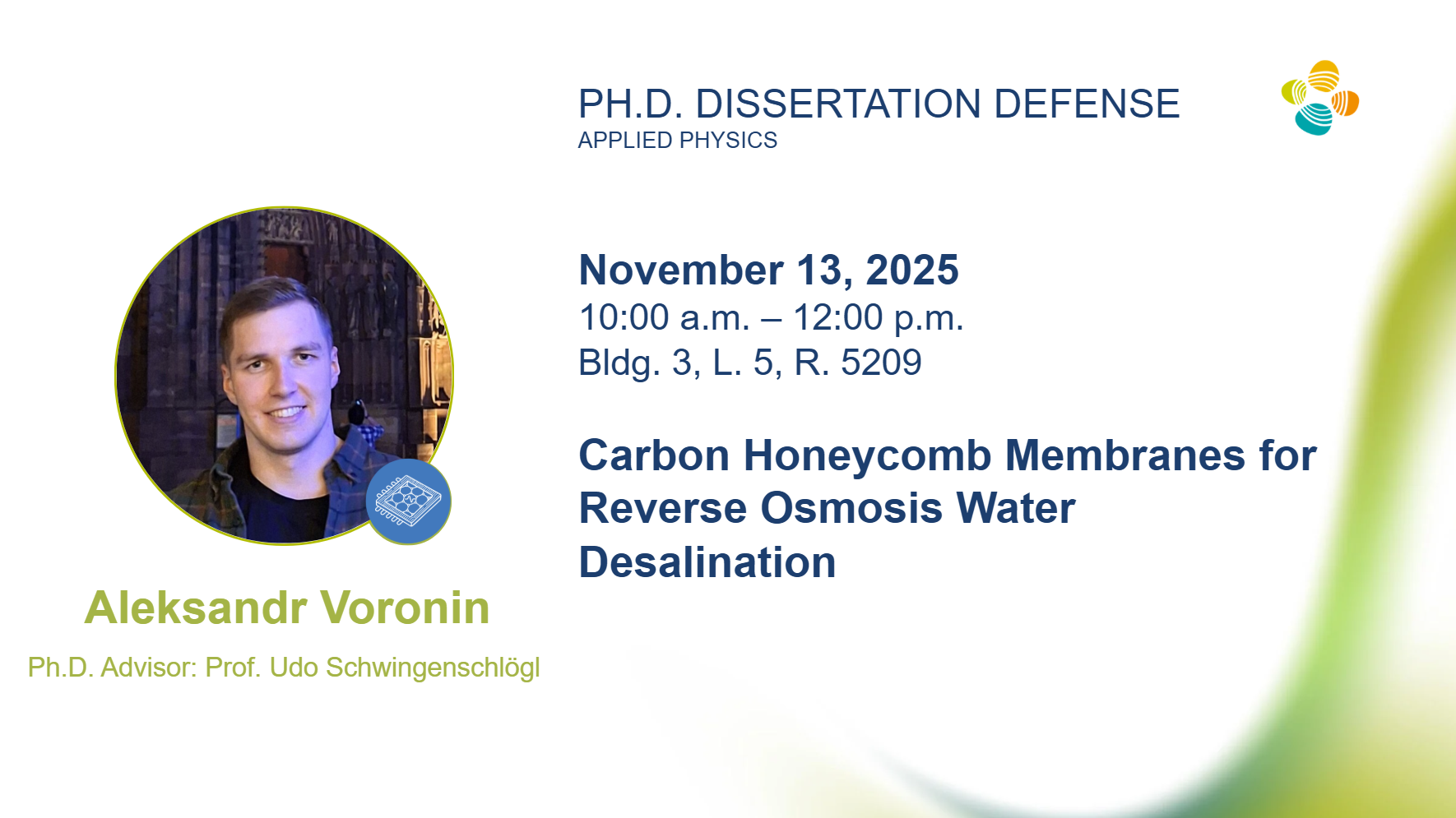Nov 2025
Carbon Honeycomb Membranes for Reverse Osmosis Water Desalination

Committee Members Information
- Ph.D. Advisor: Professor Udo Schwingenschlögl
- Committee Chair: Professor Luigi Cavallo
- External Examiner: Professor Andreas Larsson
- Committee Member: Professor Stefaan De Wolf
- Committee Member: Professor Duc Tam Ho
Abstract:
Obtaining fresh water from the Earth’s vast saltwater has emerged as a critical task of the 21st century. While reverse osmosis is the leading technology for desalination, the performance of conventional polyamide membranes is limited by several significant drawbacks, including a trade-off between selectivity and permeability, susceptibility to fouling, and high energy consumption. This raises the need for a new generation of membrane materials that can overcome these limitations and provide a highly efficient desalination process.
In this thesis, we present a computational study by classical molecular dynamics and density functional theory of a novel porous carbon allotrope, a carbon honeycomb membrane, for reverse osmosis water desalination. In particular, we address the issue of controlling the membrane’s pore size. We investigate how chemical functionalization of the carbon honeycomb membrane with various func-
tional groups affects its desalination performance. We calculate the salt rejection rate and water permeability for different functionalization densities and spatial arrangements, and show that functionalization can be used to achieve a 100% salt rejection rate while maintaining a water permeability that is three orders of magnitude higher than that of the commercial membranes. We provide a detailed analysis of the underlying mechanisms that govern the salt rejection of the carbon honeycomb membranes and the water transport through them. We then turn to an alternative approach of controlling the pore size by applying compressive strain to carbon honeycomb membranes with different pore sizes. While mechanical strain is shown to effectively reduce the pore size and significantly enhance the salt rejection, we find for unfunctionalized membranes that non-uniform buckling prevents perfect salt rejection through mechanical means alone. A dual-tuning approach of combined chemical functionalization and mechanical strain achieves perfect salt rejection for membranes with a pore diameter of 1.8 to 2.2 nm.
Overall, the results of this thesis shows that carbon honeycomb membranes can achieve a water permeability that is two to three orders of magnitude higher than that of conventional polymer membranes. This implies great potential of carbon honeycomb membranes as alternative to conventional polymer membranes, paving the way to more efficient and sustainable desalination technologies.